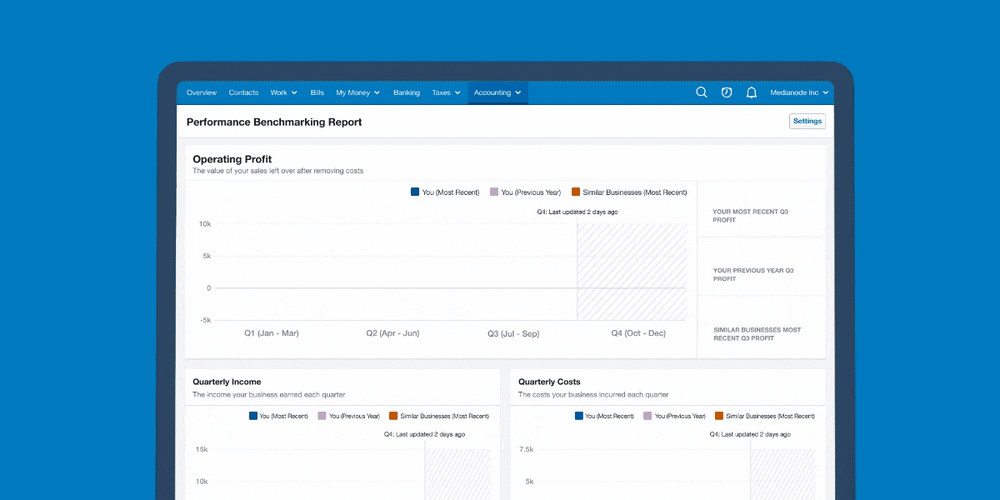How to measure the performance of your small business

Success can look very different from one small business to the next. But the positive impact of clearly defining what success means to you, and knowing how that can be measured, is something all businesses have in common.
There are many ways to track your business’s performance and it can be hard to know the most useful metrics to look at first. To get you started we’ve pulled together some of the most commonly used financial and non-financial measures.
Good measurement requires clear goals
Before you decide what to measure you should think carefully about what you’re trying to achieve and then set yourself clear goals. Are you happy to keep the business ticking over or are growth and increased profitability your ambitions? Perhaps you want your business to make a difference to your customers, your local community or wider society.
When you’re clear on your goals, you can start to break them down into smaller, more manageable objectives and then identify the key metrics for measuring your progress towards them. Read our beginner’s guide to business metrics if you’re just starting the process or if you’d like to remind yourself of the key principles.
What are your business’s key performance indicators?
Having clear goals will allow you to set targets or key performance indicators (KPIs). These targets should make it clear to everyone in the business what their role is in helping to make it a success.
Knowing how different areas of your business are performing will highlight areas of strength and weakness, and let you know what changes you need to make.
Ways to measure your business’s financial performance
If you want to take the pulse of your business’s health, the financial metrics are a great place to start. There are a whole range of financial KPIs that you can track. They range from simple measures like net profit to more complex ones like average customer acquisition cost. Here are some of the key measures you might want to track.
Net profit
Usually a business’s bottom line, net profit is your business’s total income minus its total day-to-day running costs. As such, a business’s net profit calculation will usually include all of its costs and all of its income. You can read more about determining the profitability of a business in our blog post on how to find out if your small business is profitable. If you’re a FreeAgent customer you can track your business’s profit and loss live on the software’s small business dashboard.
Cashflow
Cashflow can be a helpful indicator of how well your business is performing. It is the amount of income your business has received over a period of time, minus the amount spent by your business over the same period. Accounting software like FreeAgent can track your 90-day cashflow forecast automatically. Or read our guide to making a cashflow forecast for help with tracking your longer-term cashflow.
Business expenditure
If you want to make a profit, it’s important to monitor your business outgoings closely. Day-to-day running costs could include everything from utilities to supplies or insurance. If you’re closely monitoring all of your outgoings, you’ll have early warning if they start to increase, and can take steps to reduce unnecessary costs. Over time you may spot seasonal trends and patterns that could help you with your business budgeting for certain times of the year.
Working capital
Working capital is the difference between a business’s current assets (what a business owns) and its current liabilities (what a business owes). The amount of working capital your business needs may change over time. Monitoring it closely should make you aware if you need to take steps to find additional capital.
Other areas of financial performance you could track include how your business is growing, levels of borrowing or your efficiency.
Ways to measure your business’s non-financial performance
Some of your business goals may not just be about your bottom line, so it’s important to consider non-financial measures and targets.
There are many different areas you could choose to set targets for, depending on how you define success. Two really important areas to consider are your customers and your competition.
Keeping customers satisfied
Happy customers can be one of the best marketing tools your business has. Many businesses set specific customer satisfaction KPIs to track how happy their customers are with their product or service. One example is the Net Promoter Score (NPS), which measures customers’ willingness to recommend a business to a friend or colleague.
Customer churn can be another helpful measure of customer satisfaction. This is the rate at which customers stop buying your product or using your service. You can measure your business’s customer churn rate by dividing the number of customers who left within a certain period of time by the total number of customers you had at the beginning of that period. If you track the rate over time and discover it’s increasing, you should investigate further and take steps to address the problem.
Review sites like Trustpilot can provide you with direct customer feedback. Google reviews for your business have the added benefit of appearing alongside your Google business profile and contributing towards your business’s star rating on Google. Both of these factors can help your business stand out in online search results, and help you earn the trust of potential customers. It’s therefore a good idea to ask your existing customers if they’d be willing to write an online review of your business on at least one of these platforms.
If you’re keen to gather additional feedback, you could also consider either asking customers about their experience face-to-face, arranging interviews (perhaps with the offer of a small incentive to encourage participation) or using questionnaires or surveys.
Benchmarking against your competition
Benchmarking lets you measure the performance of your business against the competition. Identify who the main competitors are in your sector and invest some time finding out as much as you can about them.
While you might not be able to access all the competitor data that you’re interested in, it should be possible to find information on the products and services they offer, their pricing, and what they consider their strengths to be. Sales literature, advertising and social media can all give you insights You may also be able to find some additional data through industry market reports or sector-wide statistics compiled by organisations like trade bodies. You could even consider commissioning a specialist to carry out some market research.
You should know the key objectives that you are focusing on in your business and have the data which you’re measuring success by. By analysing the competitor data you have found and comparing it with your own data, you can then set benchmarks in these key areas and introduce targets for your business to attain.
Get unique performance insights from FreeAgent
If you’re keen to develop a stronger understanding of how your business is doing, FreeAgent’s Performance Benchmarking report can do a lot of the hard work for you by providing unique insights into your business’s performance. The report shows your quarterly operating profit, broken down into income and costs. It also provides a year-on-year comparison if you’ve been using FreeAgent for more than a year.
If you opt in to the ‘similar business’ feature, the report can also show you the average operating profits, costs and incomes of businesses like yours. If you run a pet shop in Manchester, for example, your similar businesses would be ‘Vet & Pet Care in North West England’ and you could compare your performance against this average. You can find out more about how the Performance Benchmarking report works over on our Knowledge Base.
Not using FreeAgent yet? Try a 30-day free trial today and see how our award-winning software’s insights and accounting reports can help you make smarter business decisions.


